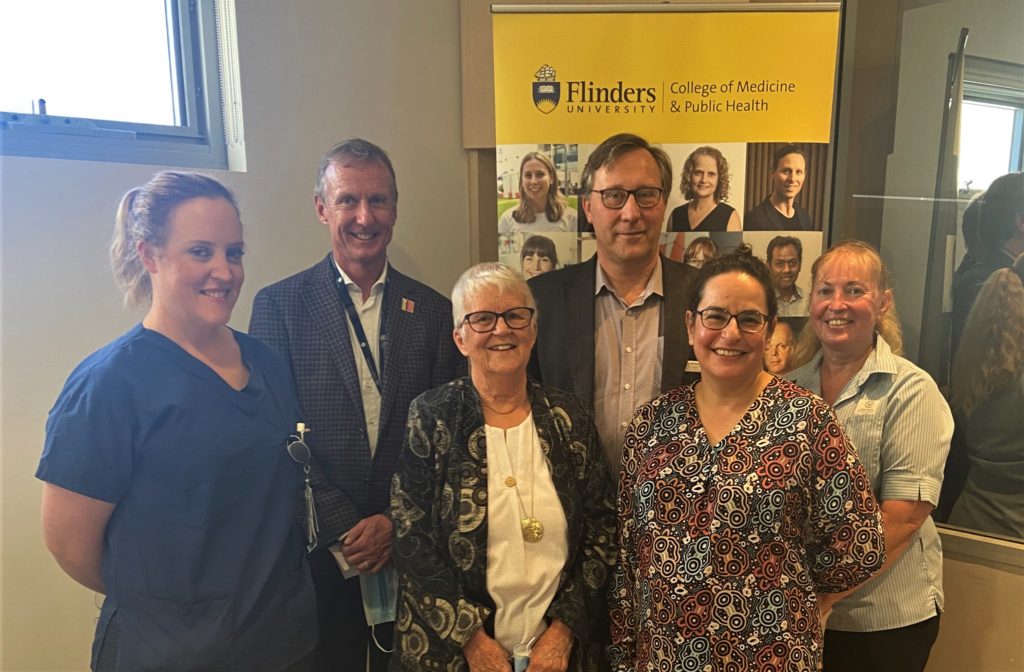Led by Flinders University in partnership with SA Health's Southern Adelaide Local Health Network (SALHN) and the SA Ambulance Service, the research will engage patients and the medical community to find the best way forward for treating older Australians, who make up almost a quarter of all ED visits.

"Emergency departments across Australia are often overwhelmed by the high demand from our growing ageing population but nearly half of the visits are potentially preventable," says Flinders University's Associate Professor Craig Whitehead, Director of Rehabilitation, Aged, and Palliative Care at SAHLN and the project's Chief Investigator.
"While they don't always have life-threatening conditions, older people do require urgent and complex care, and this can often be better managed outside of an emergency department."
In September 2021, SAHLN introduced a new model of urgent care for older people, known as CARE, designed to improve care for older patients by providing alternative treatment pathways to the ED when emergency care is not required.
"Evidence has shown admission avoidance programs can be an effective treatment method, so we designed this model in conjunction with patients, geriatricians, emergency physicians, the state ambulance service, allied health and nursing and hospital managers," says Associate Professor Whitehead.
Associate Professor Whitehead and his team have now been awarded over $1.1 million in MRFF funding to assess the outcome of this new model for patients, families and the health service, and inform service improvements.
The team will evaluate the CARE service and the Virtual Rehab Unit to understand its impact on the health system, as well as undertake an economic evaluation.
"Importantly, we will be working directly with the Council on the Ageing to find out what older Australians value about emergency care and what is important to them," he says.
"Older Australians are central to this project and our proposed model of care will explore ways in which we can better meet their needs and preferences while also improving patient experience and health outcomes."

The project will also explore what Aboriginal and Torres Strait Islander consumers look for in emergency care, as well as seek to understand the barriers they face, with the team including two Aboriginal researchers - Associate Professor Tamara Mackean and Shane D'Angelo - from the Aboriginal and Torres Strait Islander Public Health group in Flinders University's College of Medicine and Public Health.
They bring both public health and Indigenous health research experience and will engage with Aboriginal and Torres Strait Islander peoples through yarning circles.
"This is an opportunity for Aboriginal and Torres Strait Islander worldviews and experiences to be incorporate into the conduct of the research from the beginning," said Associate Professor Mackean.
After speaking with older Australians, the project will also look to create and validate a questionnaire that can measure consumer experience and quality of their emergency care.
"We will listen to the consumers and patients, and alongside their families and the hospital system, our project will evaluate and develop the best model of care for older Australians and ensure it is acceptable and able to be implemented across hospitals around the country," says Associate Professor Whitehead.
Deputy Vice-Chancellor (Research) Professor Robert Saint welcomed the federal announcement as further confirmation of the impact of Flinders health research.
"This project is all about making a difference to the quality of care delivered to older Australians and supporting their health and wellbeing in ways that meet their personal, cultural and clinical needs."
"This adds to our growing research strength which is transforming people's lives and improving health systems. Our overall research funding has grown by more than 70% in the past four years and much of this success has been driven by our exceptional health and medical researchers - and we're looking forward to even further growth with the completion of our new Health and Medical Research Building creating greater capacity for impact-focused research," says Professor Saint.






